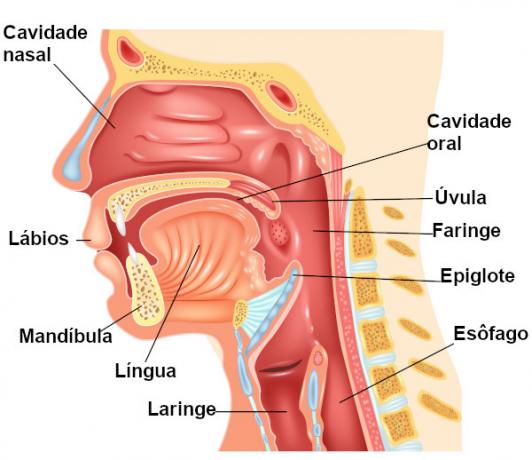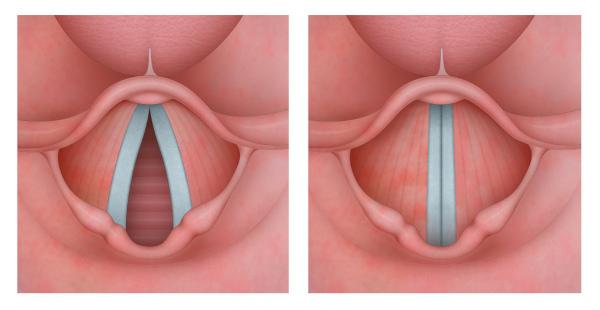THE larynx is an organ that is part of the respiratory system and promotes the connection between the pharynx and the trachea. In this region, two important structures are present: The epiglottis and the vocal folds.Because it is the place where the vocal folds are present, the larynx is also recognized as vocal organ.Inflammation of the larynx is known as laryngitis.
Read more: Parts of the human body and their functions
General characteristics of the larynx
The larynx is a tube present in the respiratory system that promotes the connection between pharynx and trachea. It is located at median and anterior plane of our neck. On the walls of the organ, irregular cartilaginous pieces are present, which are joined together by connective tissue fibroelastic. The presence of cartilage is important, as it makes the organ remain open and, thus, air passes freely through the structure.

In the larynx there are three even cartilages and three odd cartilages. The unique cartilages are the
thyroid, cricoid and epiglottis, while the pairs are the arytenoids, cuneiforms and corniculates. At thyroid, cricoid and most arytenoid cartilages are formed by hyaline-type cartilage, while the others are formed by elastic fabric.The largest cartilage in the larynx is the thyroid cartilage, which forms a prominence known as the “Adam's apple”, which is more visible in men. Attached to the upper edge of the thyroid cartilage, is the epiglottis, which resembles a flap. Its role is to prevent the food, at the time of swallowing, from going to the respiratory system.
In addition to the epiglottis, the larynx also has the vocal folds, formerly known as vocal chords. The laryngeal mucosa forms two pairs of folds. The first pair of pleats, the most superior, forms the vestibular folds, also called false vocal folds. The second pair, in turn, forms the true vocal folds. Thus, we can conclude that the larynx is not just a way for the passage of air, it is also responsible for the phonation.
Above the vestibular fold, we have the portion of the larynx called vestibule, which extends to the entrance of the organ. THE glottis is the portion located between the vestibular and vocal folds on each side. The space between the vocal folds is called the glottic rhyme. Finally, we have the infraglottic cavity, which is below the vocal folds.
Read too: Vocal fold polyps
Vocal folds and sound formation
At vocal folds they are present in our larynx and are responsible for making sounds. They arise from the lateral walls of the larynx and move towards the center of the glottis. The vocal folds are positioned and stretched thanks to muscles from the larynx itself.
When we breathe, the vocal folds remain open, allowing air to pass through. When we speak, however, the strings move and the passage of air causes these structures to vibrate. The tone of the voice will be the result of the degree of stretching of the folds as well as the proximity between them and the mass of their edges. sounds higher pitches they are the result of stretched pleats vibrating quickly. already the bass sounds they are produced when the pleats are less tense and vibrate slower.

It is noteworthy that the emission of sounds does not only involve the vocal folds, the action of the lungs, larynx, pharynx and mouth, which acts as a resonance chamber. Furthermore, to ensure that we are able to communicate through language, it is essential to move the lips, jaw and tongue.
laryngeal functions
We can summarize the laryngeal functions into three main ones:
- Ensure the passage of air;
- Prevent food from entering the respiratory system during swallowing;
- Acting in the production of sounds.
Laryngitis
Laryngitis is a inflammation that affects the larynx, usually causing hoarseness and pain in the throat region. It most often occurs as a consequence of infection per virus or by excessive use of the voice. People that smoke, use alcohol, present gastroesophageal reflux or perform activities that require greater vocal effort, are more likely to develop the problem.
The treatment of laryngitis depends on its cause and usually involves the use of painkillers and anti-inflammatory in order to alleviate the symptoms. Hydration well and sparing your voice is also recommended in these cases. In people who have reflux, it is also important that this problem is treated.
By Vanessa Sardinha dos Santos
Biology teacher

